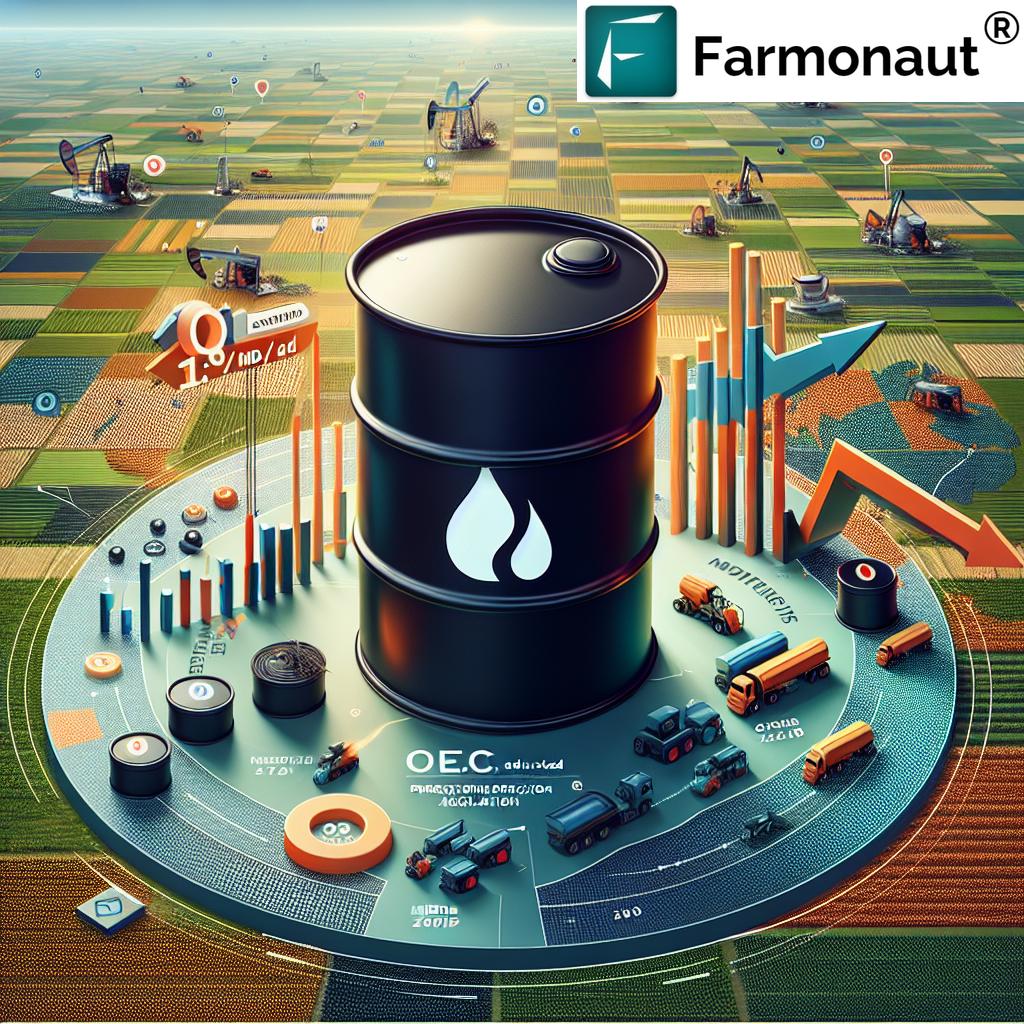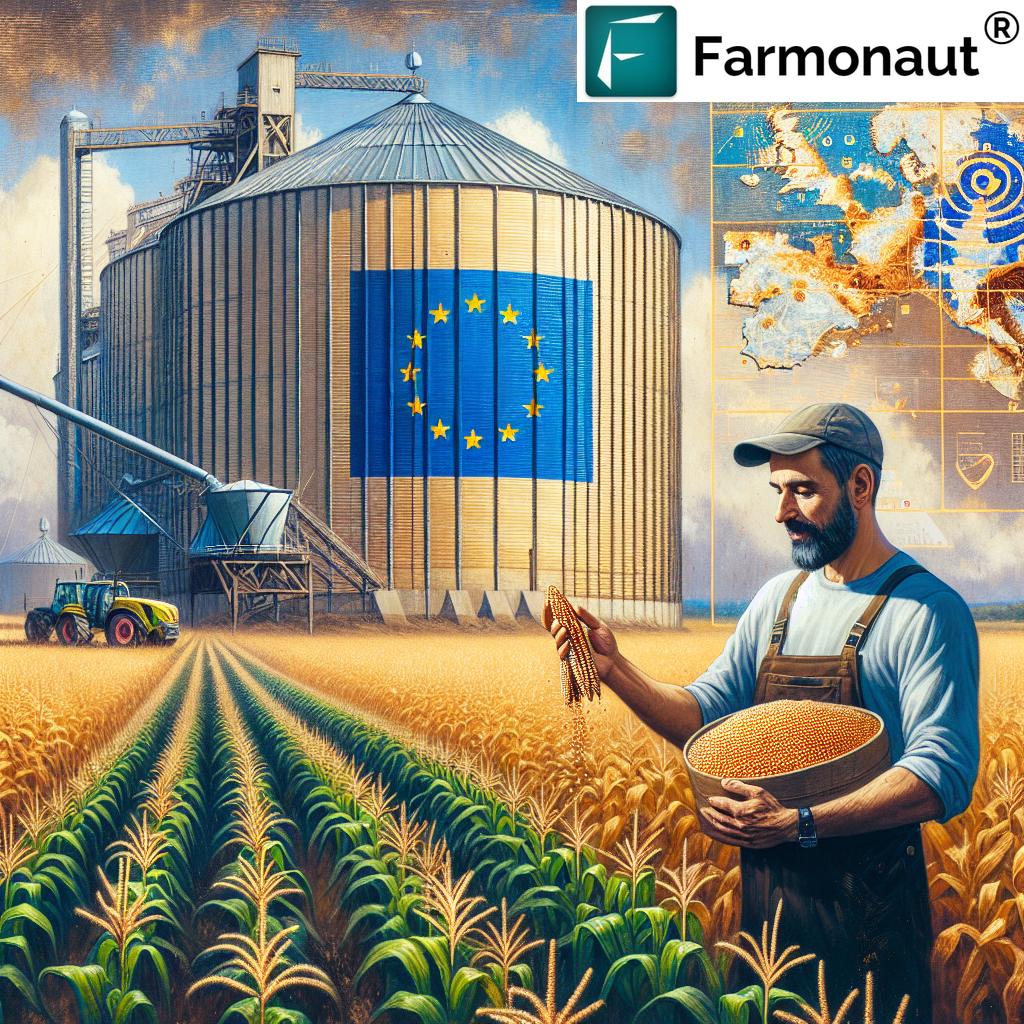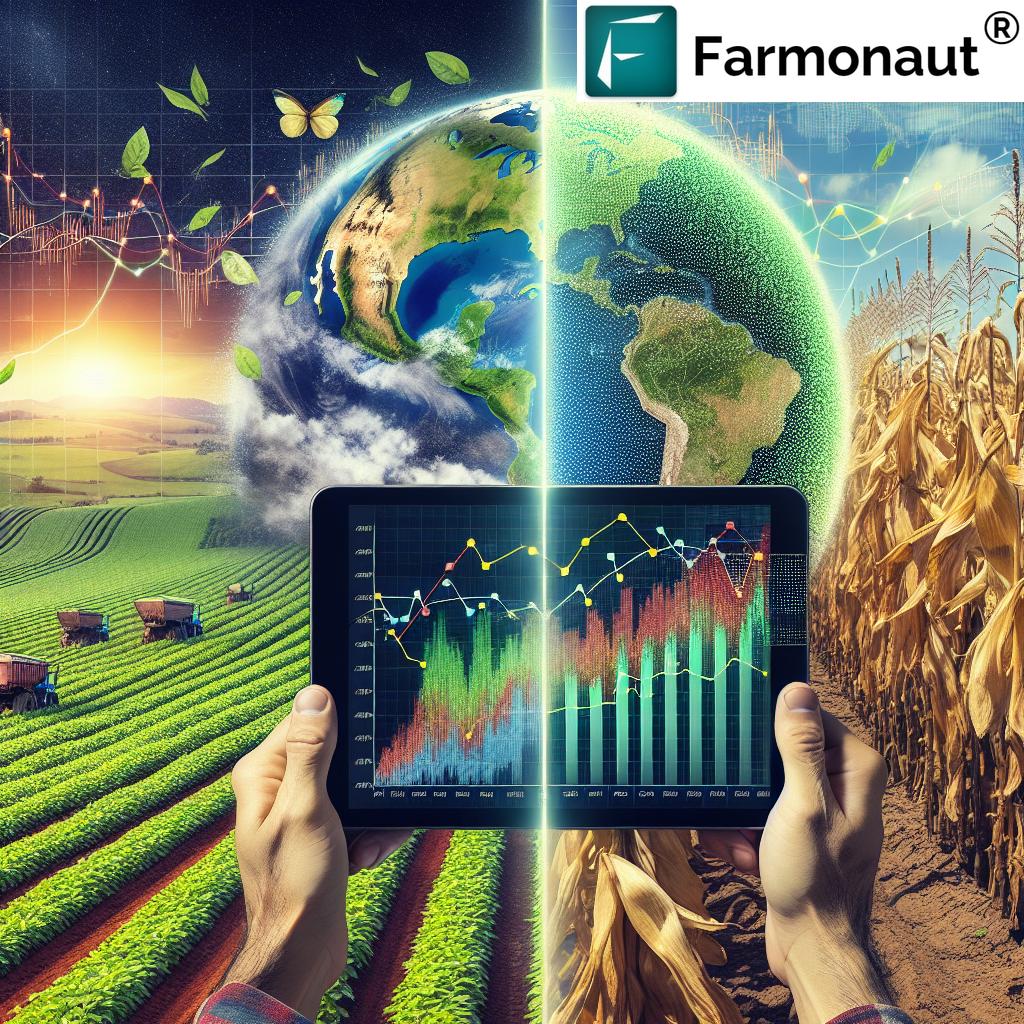Record-Breaking Q1: Global Derivatives Marketplace Hits All-Time High with 29.8M ADV
“Global derivatives marketplace hit a record-breaking 29.8M Average Daily Volume in Q1 2025.”
In a groundbreaking development for the financial world, the global derivatives marketplace has achieved unprecedented success in the first quarter of 2025. With an astounding average daily volume (ADV) of 29.8 million contracts, the industry has set a new benchmark for trading activity and market engagement. This remarkable achievement underscores the growing importance of derivatives in modern financial markets and highlights the increasing sophistication of market participants worldwide.
As we delve into the details of this record-breaking quarter, we’ll explore the factors driving this exceptional growth, analyze the performance across various asset classes, and discuss the implications for investors, traders, and financial institutions. Join us as we unpack the data and insights behind this historic milestone in the derivatives marketplace.
Understanding the Surge: Factors Behind the Record-Breaking Performance
The unprecedented success of the global derivatives marketplace in Q1 2025 can be attributed to several key factors:
- Increased Market Volatility: Heightened economic uncertainty and geopolitical tensions have led to greater market volatility, driving demand for risk management tools.
- Technological Advancements: Improved trading platforms and algorithmic trading capabilities have made it easier for market participants to execute complex strategies.
- Growing Institutional Participation: More institutional investors are turning to derivatives for portfolio optimization and risk management.
- Expansion of Product Offerings: The introduction of new derivative products has attracted a broader range of market participants.
- Regulatory Changes: Evolving regulations have created new opportunities for derivatives trading in various sectors.
These factors have converged to create a perfect storm of activity in the derivatives marketplace, resulting in the record-breaking ADV of 29.8 million contracts.
Breaking Down the Numbers: Asset Class Performance
To better understand the composition of this record-breaking quarter, let’s examine the performance of key asset classes within the derivatives marketplace:
| Asset Class | Q1 2025 ADV (millions) | Quarter-over-Quarter Growth (%) | Year-over-Year Growth (%) |
|---|---|---|---|
| Interest Rate Futures | 9.2 | 15% | 22% |
| Equity Index Futures | 7.5 | 18% | 25% |
| Agricultural Commodities | 2.8 | 12% | 20% |
| Treasury Complexes | 5.6 | 14% | 18% |
| Natural Gas Trading | 1.1 | 10% | 15% |
As we can see from the table, all major asset classes experienced significant growth, with many posting double-digit increases both quarter-over-quarter and year-over-year. This broad-based growth underscores the robustness of the derivatives marketplace and its ability to adapt to changing market conditions.
Interest Rate Futures: A Standout Performer
Among the various asset classes, interest rate futures emerged as a standout performer in Q1 2025. With a record-breaking ADV of 9.2 million contracts, this segment of the market demonstrated its critical role in financial risk management and speculation.
The surge in interest rate futures trading can be attributed to several factors:
- Central Bank Policy Uncertainty: Ongoing debates about monetary policy direction have driven increased hedging activity.
- Inflation Concerns: Fears of rising inflation have led market participants to seek protection through interest rate derivatives.
- Yield Curve Dynamics: Unusual movements in the yield curve have created opportunities for sophisticated trading strategies.
- Corporate Debt Management: Companies are increasingly using interest rate futures to manage their debt portfolios in a volatile rate environment.
The robust performance of interest rate futures highlights the market’s ability to provide essential risk management tools in an uncertain economic landscape.
Equity Index Futures: Riding the Wave of Market Volatility
Equity index futures also saw impressive growth in Q1 2025, with an ADV of 7.5 million contracts. This segment benefited from increased market volatility and growing investor interest in portfolio hedging and tactical asset allocation.
Key drivers of equity index futures growth include:
- Macro Economic Uncertainty: Concerns about global economic growth have led to increased hedging activity.
- Sector Rotation: Rapid shifts in sector performance have driven demand for index-based derivatives.
- ETF Arbitrage: The growing popularity of ETFs has created opportunities for arbitrage using equity index futures.
- Algorithmic Trading: Advanced trading algorithms have increased liquidity and trading volume in equity index futures.
The strong performance of equity index futures demonstrates the market’s ability to provide efficient tools for managing equity market exposure and implementing sophisticated investment strategies.
Agricultural Commodities: Growing Importance in Global Markets
Agricultural commodities trading saw significant growth in Q1 2025, with an ADV of 2.8 million contracts. This increase reflects the growing importance of agricultural derivatives in managing global food supply chains and hedging against price volatility.
Factors contributing to the growth in agricultural commodities trading include:
- Climate Change Concerns: Increased weather-related risks have driven demand for agricultural hedging instruments.
- Global Food Security: Growing awareness of food security issues has led to more active trading in agricultural futures.
- Emerging Market Demand: Rising food consumption in emerging markets has increased the need for price discovery and risk management tools.
- Technological Advancements: Improved crop monitoring and yield prediction technologies have enhanced market efficiency.
The robust growth in agricultural commodities trading underscores the critical role that derivatives play in managing risks and ensuring stability in global food markets.

Treasury Complexes: Navigating Fiscal Policy Shifts
Treasury complexes experienced substantial growth in Q1 2025, with an ADV of 5.6 million contracts. This increase reflects the market’s response to evolving fiscal policies and changing government debt dynamics.
Key factors driving growth in treasury complexes include:
- Fiscal Policy Uncertainty: Ongoing debates about government spending and debt levels have increased demand for treasury derivatives.
- Global Safe Haven Demand: Geopolitical tensions have driven investors towards U.S. Treasury instruments and related derivatives.
- Yield Curve Management: Financial institutions are actively using treasury derivatives to manage their yield curve exposure.
- Liquidity Enhancement: Improved market-making and electronic trading have increased liquidity in treasury derivatives.
The strong performance of treasury complexes highlights the crucial role that government debt markets play in the global financial system and the importance of derivatives in managing related risks.
Natural Gas Trading: Energizing the Derivatives Market
Natural gas trading set a new quarterly record with an ADV of 1.1 million contracts in Q1 2025. This growth reflects the increasing importance of natural gas in global energy markets and the need for sophisticated risk management tools.
Factors contributing to the growth in natural gas trading include:
- Energy Transition: The shift towards cleaner energy sources has increased the strategic importance of natural gas.
- Supply Chain Disruptions: Geopolitical events have led to increased volatility in natural gas markets, driving hedging activity.
- Weather-Related Demand: Extreme weather events have highlighted the need for robust risk management in natural gas markets.
- LNG Market Growth: The expansion of global LNG trade has increased the need for natural gas derivatives.
The record-breaking performance in natural gas trading underscores the growing complexity of energy markets and the critical role that derivatives play in managing related risks.
Implications for Market Participants
The record-breaking performance of the global derivatives marketplace in Q1 2025 has significant implications for various market participants:
- Investors: Enhanced liquidity and product diversity offer new opportunities for portfolio optimization and risk management.
- Traders: Increased market activity creates more opportunities for profit, but also requires sophisticated risk management strategies.
- Financial Institutions: Growing derivatives volumes may necessitate upgrades to trading infrastructure and risk management systems.
- Regulators: The surge in trading activity may prompt a review of existing regulatory frameworks to ensure market stability.
- Technology Providers: Increased demand for advanced trading and analytics tools creates opportunities for fintech innovation.
As the derivatives marketplace continues to evolve, market participants must stay informed and adapt their strategies to leverage new opportunities and manage emerging risks.
The Role of Technology in Driving Market Growth
Technological advancements have played a crucial role in driving the record-breaking performance of the global derivatives marketplace. Key technological factors include:
- High-Frequency Trading: Advanced algorithms have increased market liquidity and efficiency.
- Cloud Computing: Scalable infrastructure has enabled market participants to handle larger trading volumes.
- Big Data Analytics: Improved data processing capabilities have enhanced risk management and trading strategies.
- Blockchain Technology: Emerging applications in settlement and clearing processes are increasing market efficiency.
- Artificial Intelligence: AI-driven trading strategies are becoming more sophisticated and widespread.
As technology continues to evolve, we can expect further innovations to shape the future of the derivatives marketplace.
Global Regulatory Landscape: Adapting to Market Growth
The record-breaking growth in derivatives trading has implications for the global regulatory landscape. Regulators are faced with the challenge of ensuring market stability and integrity while fostering innovation and growth. Key regulatory considerations include:
- Systemic Risk Management: Assessing and mitigating potential systemic risks associated with increased derivatives trading.
- Cross-Border Coordination: Enhancing cooperation between international regulatory bodies to address global market dynamics.
- Technological Oversight: Developing frameworks to monitor and regulate the use of advanced trading technologies.
- Transparency Requirements: Implementing measures to ensure adequate market transparency and price discovery.
- Investor Protection: Balancing the need for market access with appropriate safeguards for retail investors.
As the derivatives marketplace continues to grow and evolve, regulatory frameworks will need to adapt to ensure the continued stability and integrity of global financial markets.

The Future of Derivatives Trading: Trends to Watch
As we look beyond the record-breaking Q1 2025, several trends are likely to shape the future of derivatives trading:
- ESG Derivatives: Growing demand for sustainability-linked financial products may lead to new types of ESG derivatives.
- Cryptocurrency Derivatives: The maturing cryptocurrency market may see increased integration with traditional derivatives markets.
- Artificial Intelligence: AI-driven trading and risk management strategies are likely to become more sophisticated and widespread.
- Decentralized Finance (DeFi): The growth of DeFi platforms may create new opportunities and challenges for derivatives trading.
- Climate Risk Derivatives: Increasing awareness of climate change may drive demand for new types of weather and climate-related derivatives.
These trends highlight the dynamic nature of the derivatives marketplace and the ongoing need for innovation in financial products and trading strategies.
“Double-digit growth observed across multiple sectors in the commodity exchange statistics for Q1 2025.”
The Role of Agricultural Technology in Derivatives Markets
As we consider the record-breaking performance in agricultural commodities trading, it’s worth noting the growing influence of agricultural technology (AgTech) on these markets. Companies like Farmonaut are at the forefront of this technological revolution, providing innovative solutions that impact both farming practices and financial markets.
Farmonaut’s satellite-based farm management solutions offer real-time crop health monitoring and AI-driven advisory systems. These technologies provide valuable data that can influence agricultural commodities trading in several ways:
- Improved Yield Predictions: More accurate crop yield forecasts can lead to better-informed trading decisions.
- Risk Assessment: Enhanced monitoring of crop health allows for more precise risk assessment in agricultural derivatives.
- Market Transparency: Real-time data on crop conditions can increase transparency in agricultural commodities markets.
- Sustainable Farming Practices: By promoting efficient resource use, AgTech can influence long-term trends in agricultural production and pricing.
For more information on how Farmonaut’s technologies are transforming agriculture, visit their web application or download their mobile apps:
Leveraging Data for Better Decision-Making
The record-breaking performance of the derivatives marketplace underscores the importance of data-driven decision-making. Market participants are increasingly relying on advanced analytics and real-time data to inform their trading strategies and risk management practices.
For those interested in accessing high-quality data for agricultural and weather-related analysis, Farmonaut offers a comprehensive API that provides satellite and weather data. This can be particularly valuable for traders and analysts focused on agricultural commodities. To learn more about integrating this data into your systems, check out the API Developer Docs.
Sustainable Finance and Carbon Markets
As environmental concerns continue to shape financial markets, derivatives related to carbon emissions and sustainability are gaining prominence. Farmonaut’s carbon footprinting services can provide valuable insights for companies and investors looking to navigate these emerging markets. By offering real-time data on emissions, Farmonaut enables businesses to take steps towards sustainability and compliance with environmental regulations.
Supply Chain Transparency and Traceability
The growing importance of supply chain transparency is influencing both physical commodity markets and related derivatives. Farmonaut’s traceability solutions leverage blockchain technology to ensure transparency in agricultural supply chains. This increased transparency can lead to more efficient pricing in commodity markets and potentially new types of derivatives based on supply chain metrics.
Risk Management in Agricultural Finance
The record-breaking performance in agricultural commodities trading highlights the need for robust risk management tools in agricultural finance. Farmonaut’s crop loan and insurance services use satellite-based verification to reduce fraud and improve access to financing for farmers. This technology can potentially lead to more accurate pricing of agricultural risk in both insurance and derivatives markets.
Optimizing Agricultural Operations
Efficient agricultural operations are crucial for maintaining stable commodity supplies, which in turn affects derivatives markets. Farmonaut’s fleet management and large-scale farm management solutions help agribusinesses optimize their operations, potentially leading to more predictable commodity production and pricing.
The Future of Agricultural Advisory Services
As the agricultural sector becomes increasingly data-driven, advanced advisory services are playing a crucial role in shaping production decisions and market expectations. Farmonaut’s crop plantation and forest advisory services leverage AI and satellite data to provide personalized recommendations, potentially influencing broader trends in agricultural production and related derivatives markets.
Conclusion: Embracing the Future of Derivatives Trading
The record-breaking performance of the global derivatives marketplace in Q1 2025 marks a significant milestone in the evolution of financial markets. With an unprecedented ADV of 29.8 million contracts, the industry has demonstrated its resilience, adaptability, and crucial role in the global financial ecosystem.
As we look to the future, it’s clear that the derivatives marketplace will continue to evolve, driven by technological innovation, changing market dynamics, and emerging global challenges. Market participants, from individual traders to large institutions, must stay informed and adapt their strategies to navigate this rapidly changing landscape.
The integration of advanced technologies, such as those offered by Farmonaut in the agricultural sector, will play an increasingly important role in shaping market trends and risk management practices. By leveraging these innovations, market participants can gain valuable insights, optimize their strategies, and contribute to more efficient and transparent financial markets.
As we move forward, the key to success in the derivatives marketplace will be the ability to embrace change, leverage technology, and maintain a deep understanding of market dynamics. The record-breaking Q1 2025 is not just a milestone to celebrate, but a springboard for future innovations and opportunities in the world of derivatives trading.
Frequently Asked Questions (FAQ)
- What factors contributed to the record-breaking ADV in Q1 2025?
The record-breaking ADV was driven by increased market volatility, technological advancements, growing institutional participation, expansion of product offerings, and evolving regulatory landscapes. - Which asset classes performed particularly well in Q1 2025?
Interest rate futures, equity index futures, and agricultural commodities all saw significant growth, with many posting double-digit increases both quarter-over-quarter and year-over-year. - How is technology impacting the derivatives marketplace?
Technology is playing a crucial role through high-frequency trading, cloud computing, big data analytics, blockchain technology, and artificial intelligence, all of which are enhancing market efficiency and creating new opportunities. - What are some emerging trends in derivatives trading?
Emerging trends include ESG derivatives, cryptocurrency derivatives, AI-driven trading strategies, decentralized finance (DeFi) integration, and climate risk derivatives. - How are agricultural technologies influencing derivatives markets?
Agricultural technologies, such as those offered by Farmonaut, are providing more accurate yield predictions, enhanced risk assessment capabilities, and increased market transparency, all of which can influence agricultural commodities trading.
Earn With Farmonaut
Earn 20% recurring commission with Farmonaut’s affiliate program by sharing your promo code and helping farmers save 10%. Onboard 10 Elite farmers monthly to earn a minimum of $148,000 annually—start now and grow your income!
For more information about this exciting opportunity, visit our Affiliate Program page and watch the following video:
Farmonaut Subscriptions



















